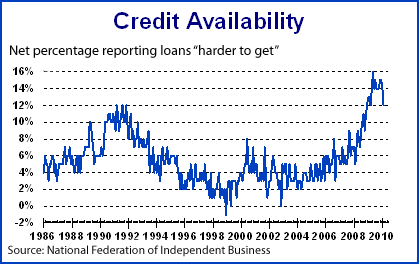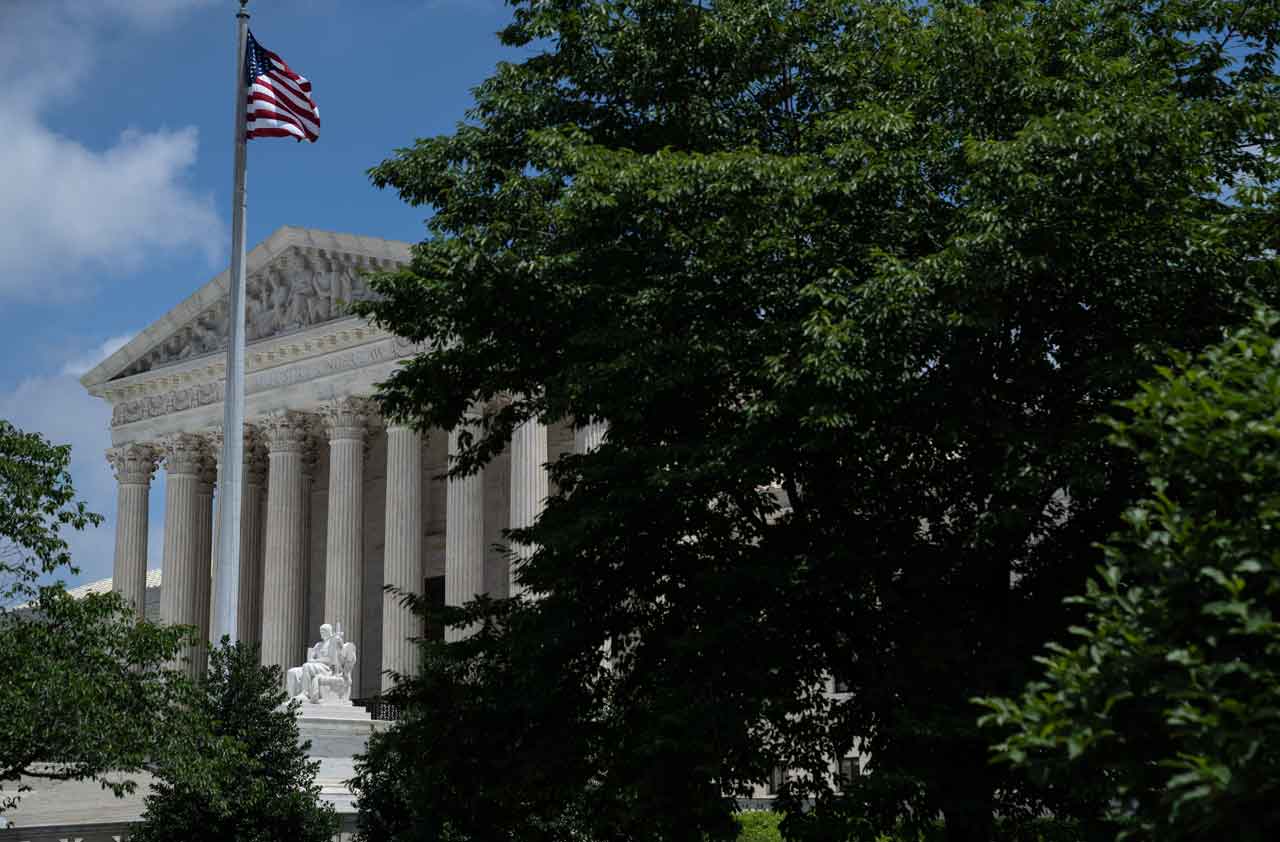The End of the Credit Crunch
Access to business loans is about to get easier.

Business access to bank loans is poised to improve as lenders get losses under control and upgrade their economic outlook, while borrowers strengthen their financial condition. The result will be a virtuous circle: easier credit stimulating economic activity, which feeds back to still easier credit. This can’t go on forever, of course. But the self reinforcing dynamic has at least a year to run.
First, let’s get the bad news out of the way: Bank losses remain huge. The industry racked up a whopping $187 billion in losses last year, amounting to 2.9% of loans outstanding—greater than any time since 1934. About the best that can be said is that the rate at which losses are increasing slowed during the course of the year, and a plateau seems to be taking shape.
What’s more important, however, is that banks beefed up their barricades against further damage. The industry’s first line of defense against insolvency—loan loss reserves—stood at 3.1% of loans outstanding as this year began. That’s greater than any time since 1934, when the FDIC began keeping such records. And the last line of defense—bank equity capital—also improved, despite the repayment of three-quarters of the funds the government poured into banks and financial corporations to avoid a meltdown in 2008. (The federal assistance was repaid at a handsome profit to the American taxpayer, by the way.) At 11%, the industry’s equity-to-asset ratio stands at its highest since 1938. These substantial cushions are one reason the purse strings are likely to loosen this year.
From just $107.88 $24.99 for Kiplinger Personal Finance
Become a smarter, better informed investor. Subscribe from just $107.88 $24.99, plus get up to 4 Special Issues

Sign up for Kiplinger’s Free Newsletters
Profit and prosper with the best of expert advice on investing, taxes, retirement, personal finance and more - straight to your e-mail.
Profit and prosper with the best of expert advice - straight to your e-mail.
Banks are taking heart from the nascent economic recovery, though they remain prepared for the worst. The Federal Reserve reported that in January, for the first time since early 2007, the percentage of banks tightening terms on business loans was nearly offset by an equal number of them easing lending terms. Sixty percent of the banks that did relax loan terms cited a “more favorable or less uncertain economic outlook.”
This growing optimism (or, more fairly, diminished pessimism) is largely rooted in the improving financial condition of their customers. As I noted last week, businesses have been stockpiling cash. The resulting liquidity bolsters lender confidence that short-term loans will hold up well. And with the recent stabilization of property values, banks now have greater certainty when assessing the collateral backstopping longer-term loans.
The impending ease won’t be geographically uniform, however. Community banks in states with more severe economic hangovers, including those coping with auto sector restructuring (Michigan, for example) and the real estate bust (including Florida, California, Nevada and Arizona) are struggling with higher loss rates and intense regulatory scrutiny that will likely be slow to thaw. As Cam Fine, president of the Independent Community Bankers of America, puts it: “The economies of those states are struggling, and the bank examination atmosphere has been so severe in the past two years that many bankers have decided to simply hunker down and not go out on a limb.”
If my prediction of an imminent easing of bank lending holds up, two developments will soon confirm it. First, the next Federal Reserve survey of lending officers will show a majority of respondents easing their terms on business loans—the first such occurrence in three years. This survey is now under way and will be available during the first week of May.

Second, a monthly survey conducted by the National Federation of Independent Business will show a sharp drop in participants claiming that loans are “harder to get.” As of February, 12% more survey respondents said loans were harder to get than those who said credit was easier to secure. While that’s an improvement over last year—when, in May, a net 16% of respondents said lending was tougher to come by than three months earlier—a 12% margin is still symptomatic of very tight conditions. Normally, that figure would range between 3% and 9%.
Aside from the obvious implication -- that creditworthy businesses won’t have as tough a time with their bankers -- this easing of credit is also critical to the economic outlook. The federal stimulus is set to wind down around year-end, and the private sector will increasingly be required to keep the momentum going. Additionally, broader lending will be an important precondition for any change in monetary policy: It’s hard to imagine the Fed hiking interest rates or draining money from banks when lenders still aren’t doing their job.
Profit and prosper with the best of Kiplinger's advice on investing, taxes, retirement, personal finance and much more. Delivered daily. Enter your email in the box and click Sign Me Up.

-
 Dow Adds 292 Points as Goldman, Nvidia Soar: Stock Market Today
Dow Adds 292 Points as Goldman, Nvidia Soar: Stock Market TodayTaiwan Semiconductor's strong earnings sparked a rally in tech stocks on Thursday, while Goldman Sachs' earnings boosted financials.
-
 Why Public Markets Don't Look Like They Used To
Why Public Markets Don't Look Like They Used To -
 Turning 65 in 2026? Here Is Exactly How to Sign Up for Medicare
Turning 65 in 2026? Here Is Exactly How to Sign Up for MedicareWhether you’re months away from your 65th birthday or plan to work past retirement age, here are the steps to secure your Medicare coverage and avoid costly mistakes.
-
 U.S. Manufacturing Is Already Ailing from Coronavirus
U.S. Manufacturing Is Already Ailing from CoronavirusEconomic Forecasts Supplies are hard to come by, and in the longer-term demand may be at risk.
-
 Will You Have to Pay More Sales Taxes on Your Online Purchases?
Will You Have to Pay More Sales Taxes on Your Online Purchases?business One thing’s for sure: Consumers who live in one of the five states without a sales tax won’t be affected by the Supreme Court’s ruling.
-
 What to Expect From the New Fed Chief
What to Expect From the New Fed ChiefEconomic Forecasts By and large, Jerome Powell will move along the path set by his predecessor.
-
 How a Border Tax Would Affect You
How a Border Tax Would Affect YouBusiness Costs & Regulation A plan to limit imports could raise prices but also create more jobs.
-
 A Housing Shortage Looms: Builders Can’t Keep Up
A Housing Shortage Looms: Builders Can’t Keep Upbusiness Starter homes especially are becoming scarce.
-
 Help Wanted in America: Skilled Workers
Help Wanted in America: Skilled WorkersTechnology In an ever-more-competitive job market, technology increases the need for skilled workers.
-
 The Unintended Consequences of a Boost in Overtime Pay
The Unintended Consequences of a Boost in Overtime PayBusiness Costs & Regulation New rules mean millions more employees will be overtime-eligible. But will employers find workarounds?
-
 U.S. Economy to Perk Up in Second Half
U.S. Economy to Perk Up in Second HalfEconomic Forecasts Consumers are recovering from a swoon induced by a wobbly stock market. But energy, other sectors will continue to struggle.